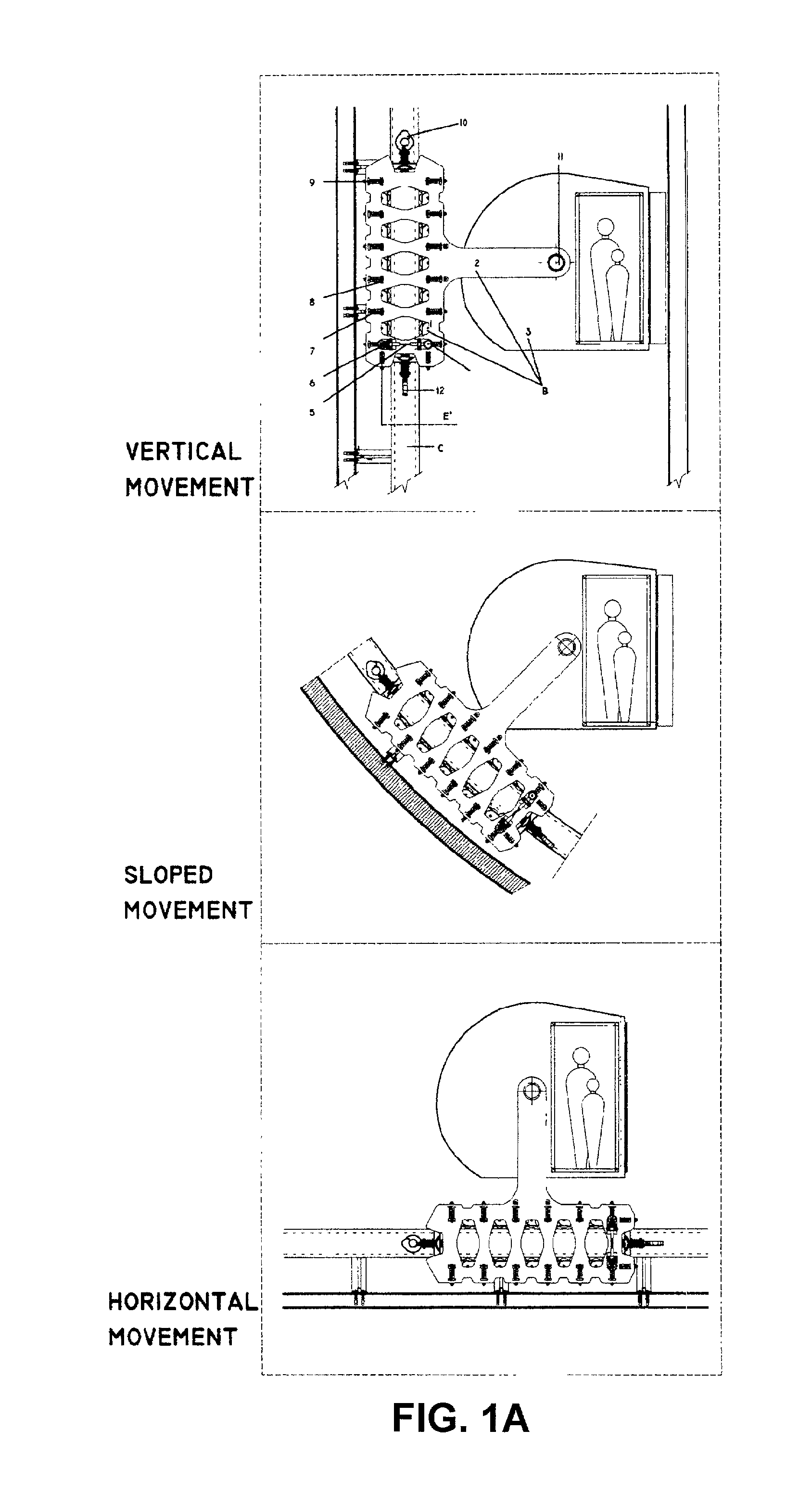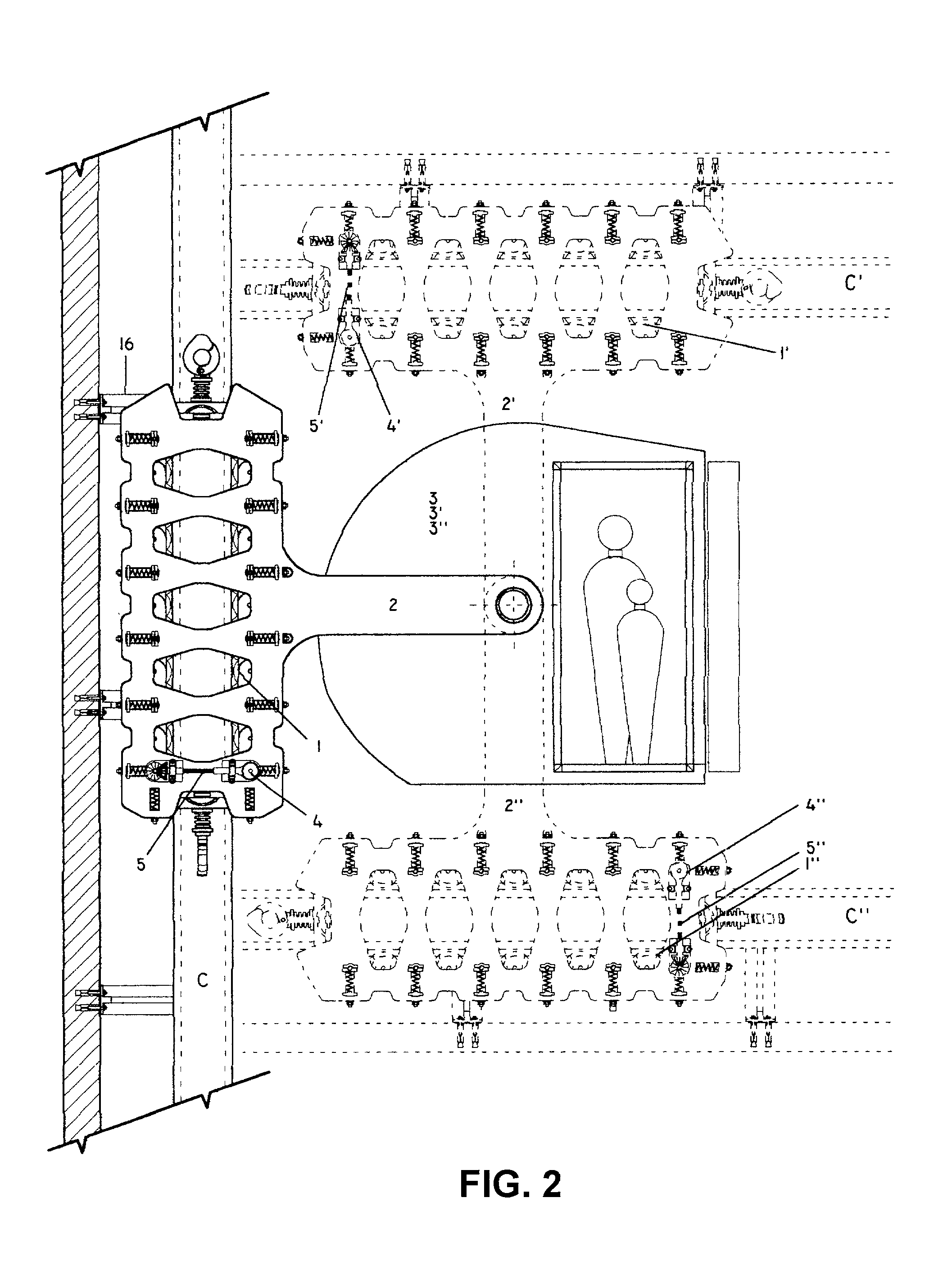Autonomous transport system
a transportation system and autonomous technology, applied in the direction of climate sustainability, railway tracks, locomotives, etc., can solve the problems of not being used as a passenger urban, not being able to run horizontally, and known vertical transportation devices such as elevators using cables and engine rooms,
- Summary
- Abstract
- Description
- Claims
- Application Information
AI Technical Summary
Benefits of technology
Problems solved by technology
Method used
Image
Examples
Embodiment Construction
[0050] The Autonomous Transport System (A.T.S) of the present invention is formed by four main sub-systems:
[0051] A) Channel Sub-system (CSS)
[0052] In FIG. 1, reference A shows the space or channel through which the transport unit may move. This channel can be interior or exterior to a particular premise, depending on its use and location. It will be defined as being interior when located inside of a building, in constructions or urban settlements or in underground sites, and exterior, when the wheel guides and the vehicle are to be located in an open space, outdoors.
[0053] B) Vehicle sub-system (VSS)
[0054] In FIG. 1, reference B shows the elements which form the vehicle unit. The unit is powered by electric energy and moves on wheel guides, in any direction: vertical, horizontal or slanted, regardless of the slope; in either direction. The overall runway is controlled from the Central Control Station and the desired stops may be controlled by pre-programmed schedules or else may be...
PUM
 Login to View More
Login to View More Abstract
Description
Claims
Application Information
 Login to View More
Login to View More - R&D
- Intellectual Property
- Life Sciences
- Materials
- Tech Scout
- Unparalleled Data Quality
- Higher Quality Content
- 60% Fewer Hallucinations
Browse by: Latest US Patents, China's latest patents, Technical Efficacy Thesaurus, Application Domain, Technology Topic, Popular Technical Reports.
© 2025 PatSnap. All rights reserved.Legal|Privacy policy|Modern Slavery Act Transparency Statement|Sitemap|About US| Contact US: help@patsnap.com



